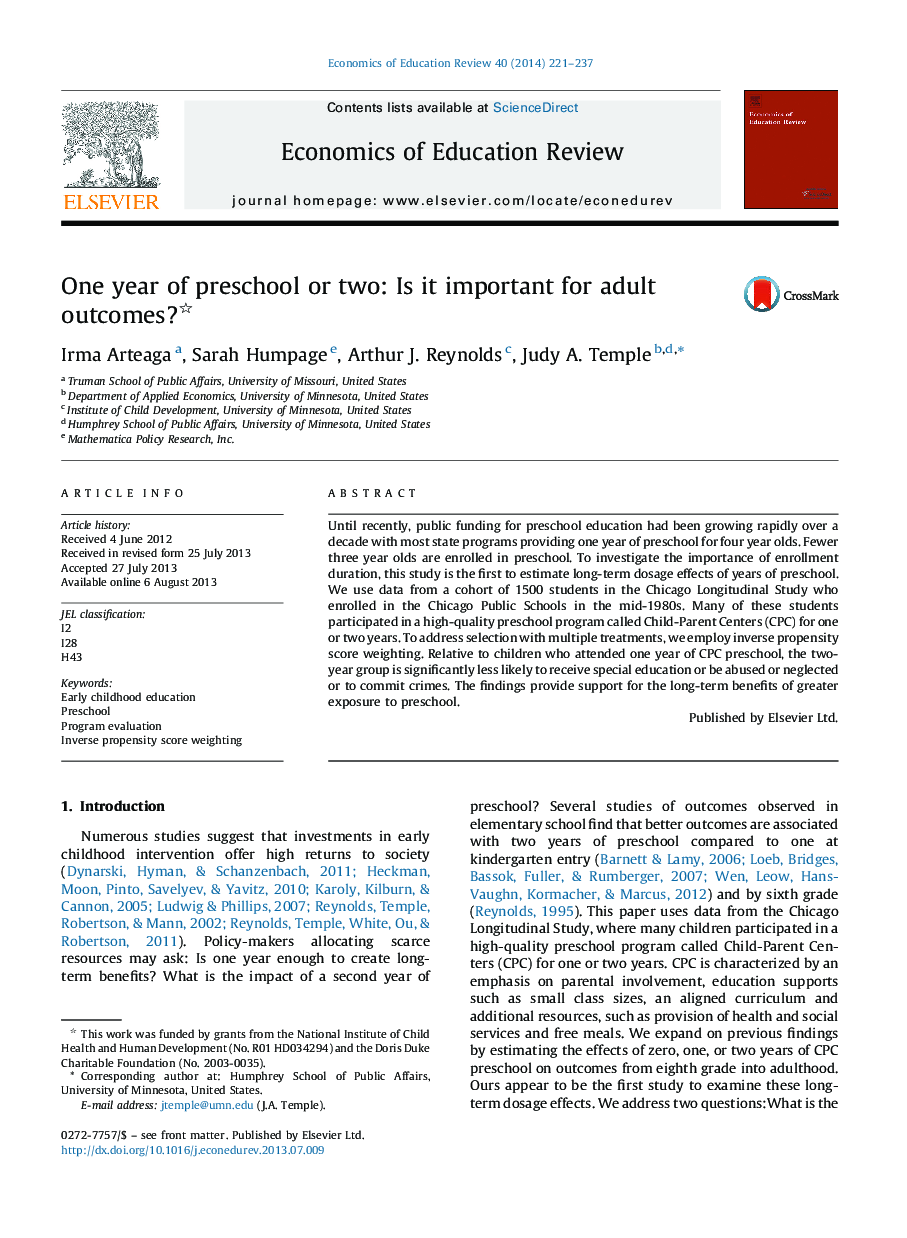| کد مقاله | کد نشریه | سال انتشار | مقاله انگلیسی | نسخه تمام متن |
|---|---|---|---|---|
| 354509 | 1434823 | 2014 | 17 صفحه PDF | دانلود رایگان |
• This paper uses inverse propensity score weighting to estimate the differential effectiveness of zero, one or two years of preschool on adult outcomes.
• Public spending on preschool for four year olds is the fastest growing education expenditure category.
• Is there a benefit of offering preschool for two years instead of one?
Until recently, public funding for preschool education had been growing rapidly over a decade with most state programs providing one year of preschool for four year olds. Fewer three year olds are enrolled in preschool. To investigate the importance of enrollment duration, this study is the first to estimate long-term dosage effects of years of preschool. We use data from a cohort of 1500 students in the Chicago Longitudinal Study who enrolled in the Chicago Public Schools in the mid-1980s. Many of these students participated in a high-quality preschool program called Child-Parent Centers (CPC) for one or two years. To address selection with multiple treatments, we employ inverse propensity score weighting. Relative to children who attended one year of CPC preschool, the two-year group is significantly less likely to receive special education or be abused or neglected or to commit crimes. The findings provide support for the long-term benefits of greater exposure to preschool.
Journal: Economics of Education Review - Volume 40, June 2014, Pages 221–237
